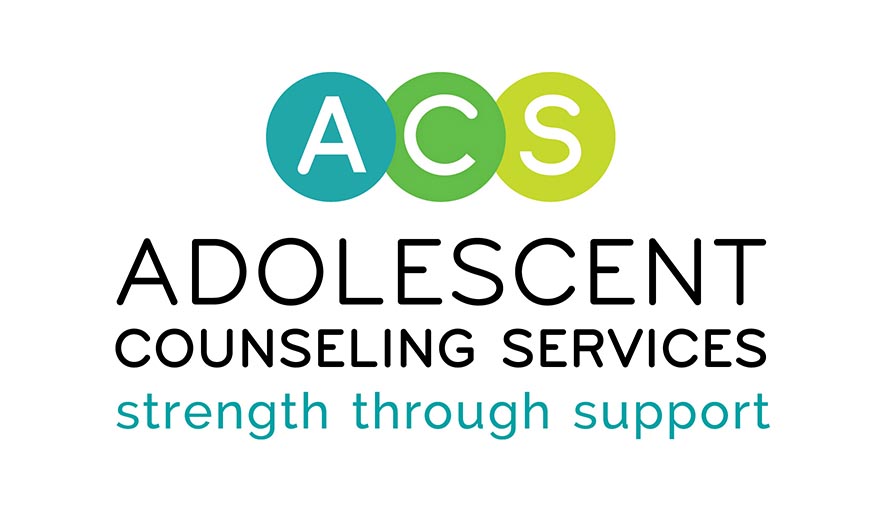
Boundaries – For You AND Your Teen
Written By: Elizabeth Rivera, Clinical Trainee at ACS, On-Campus Counseling Program and Adolescent Substance Abuse Treatment Program
“Your no makes the way for your yes. Boundaries create the container within which your yes is authentic. Being able to say no makes yes a choice.”
― Adrienne Maree Brown, Pleasure Activism: The Politics of Feeling Good
what are boundaries?Boundaries are the guidelines/limits/rules that we identify for ourselves for what are the safe, reasonable, and permissible ways for other people to be around us. They help us distinguish “me” from “not me”.
Boundaries depend on lots of factors, such as:
- Our cultures and how we were raised will influence our outlook on what are appropriate boundaries.
- Most of us will have different boundaries that depend on the setting. For example, porous boundaries in romantic relationships, rigid boundaries at work and more balanced boundaries with our children.
- Boundaries also depend on who we are around. For example, with people who have porous boundaries, we may be firmer in upholding our own!
- Boundaries can also be influenced by our feeling states and situations. For example, if we’ve spent all day with our family at home, we may feel a need for more space than usual.
Boundary Continuum
| Porous | Balanced | Rigid |
| These are boundaries that are fuzzy, you may not know what the boundary is or when it applies | These are boundaries that are clear, they are easy to understand, and they are flexible depending on the needs of the relationship | These are boundaries that are strict & inflexible, you may not know the reason for the rule but you know you have to follow it |
Boundaries and teenagers
- Setting limits helps teenagers feel safe
- Remember: adolescence is a time for exploration – this includes exploring relationship dynamics!
- Boundaries help teenagers differentiate from us and others to develop their own identity
- Maintaining balanced limits helps reduce conflicts
Examples of RIGID boundaries with teens:
- Expecting teens to go to school/work when sick
- Expecting perfection
- Expecting straight A’s or punishing rather than inquiring when grades fall
- Enforcing consequences without providing the reason (e.g., “because I said so”)
- Not allowing space for teens to communicate their needs
Examples of p o r o u s boundaries with teens:
- Allowing teens to “make the rules”
- Expecting teens to give up their regular self-care to complete homework and/or chores
- Not enforcing consequences
- Not communicating our needs and/or not providing space for teens to communicate theirs
Barriers to setting and honoring our boundaries:
- Guilt around setting boundaries with your teen
- Boundaries were not modeled well for us growing up
- Fear of rejection
- Fear of confrontation
- Safety concerns
- We don’t feel deserving of having our boundaries respected
Practicing balanced boundaries with our teens can:
- Teach them they have the right to be treated the way they want to
- Help us and them be present
- Make it easier to set boundaries in other areas of our lives
- Honor ourselves and others
- Make time for positive interactions
- Teach them to communicate their needs in various relationships
- Help us respect ourselves in all the roles we have
- Models self-care – saying no when we want to say no which helps us not take on too much!
What do I do if they cross a boundary?
Strive to set consequences along with the boundary. Just like boundaries, strive to set consequences that are: clear & specific, direct, honest and that “make sense” in relation to the boundary.
*If possible/appropriate, collaborate with your teen on the consequences! And remember that consistency is key.
How do I work towards more balanced boundaries?
To start, be kind to yourself and remember that setting boundaries is an ongoing practice of finding the right balance for your family.
- Identify what are your family’s values that will inform the rules for your family
- What do these values look like in action?
- How will you honor this boundary in the moment?
- What are specific skills you will use to help your teen honor this boundary?
- How will you know if this boundary is not being respected and what will you do when this happens?
- How will you know if this boundary is being respected and what will you do when this happens?
- How can you foster more moments of boundaries being respected?
- In what ways will your life be different when you practice balanced boundaries?
And most importantly:
Remember: as we practice ways to set and honor our boundaries, we are modeling that it is an ongoing process, that we won’t always get it right, and that we can learn from the experience
Remember: You don’t have to do it alone! Boundaries are relational and thus, it would be difficult to do it by yourself! Therapy is a great place to discuss boundaries, identify what you and your teen need and practice them!
Reflection activity: What might be possible when you communicate boundaries in a mindful way to your teen?
More reading and resources:
Further reading: Book by Dr. John Townsend “Boundaries with teens: when to say yes, how to say no”
Helpful video: “Mental health moments by Dr. Holly Daniels (link: https://www.youtube.com/watch?v=j_NphArU6bY)
Information adapted from: Positive Psychology Website (link: https://positivepsychology.com/great-self-care-setting-healthy-boundaries/) and Therapist Aid.
